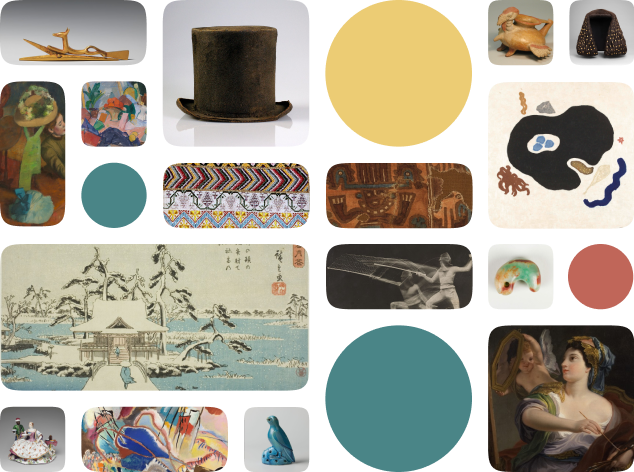Dagger (Katar)
Creator Name
Cultural Context
Date
Source
About the Work
This dagger is called a katar. It was made in the 17th or 18th century. It has a European straight blade and a South Indian grip. Swords and daggers with imported blades, or local blades fashioned in a European style, were common in Indian weapons of this time. They reflected the increasing European influence in the subcontinent. Katars, like this one, are unique to India. The user puts their fingers through the opening to grip the dagger perpendicularly to the blade. The swordsmith decorated the sides of this particular grip, or flange, with images of the 10 avatars of the Hindu god Vishnu. The smith arranged the incarnations from top to bottom in the order in which they are said to have appeared. The avatars include: Matsya (the Fish), Kūrma (the Tortoise), Varāha (the Boar), Narasimha (the Lion), Vāmana (the Dwarf), Parashurāma (Rāma with the ax), Rāmachandra (or Balarāma, brother of Krishna), Krishna, Buddha, and Kalkin (the Horse or Mounted Warrior), who has not yet come.
Metropolitan Museum of Art Object Description
Dagger (Katar)
Work details
"--" = no data available
Title
Creator
Worktype
Cultural Context
Material
Dimensions
Technique
--
Language
--
Date
Provenance
Style Period
--
Rights
Inscription
--
Location
Source
Subjects
Topic
--
Curationist Contributors
Related Content
All Works in Curationist’s archives can be reproduced and used freely. How to attribute this Work:
Unknown, Dagger (Katar), 17th–18th century. Metropolitan Museum of Art. Swords and daggers with imported blades, such as this one, were common in India in the 17th and 18th centuries, reflecting increased European influence. Public Domain.
Help us improve this content!
Let our archivists know if you have something to add.
Save this work.
Start an account to add this work to your personal curated collection.
